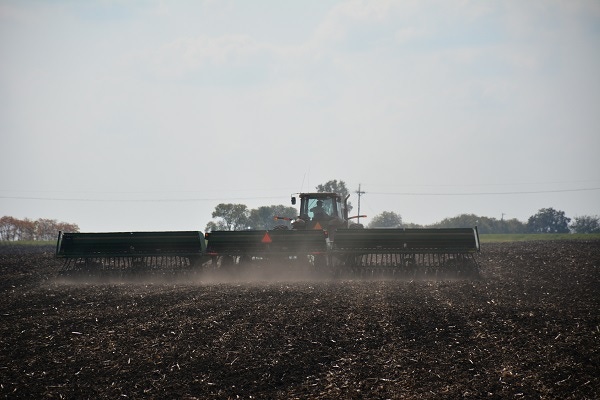September 17, 2015

Wheat prices are in the tank, and elevator managers report that producers have an above-average percentage of their wheat unsold. To decide when to sell wheat, producers tend to want a definitive price projection. No one can provide a definitive price projection.
An alternative to selling strategies based on price outlook is using mechanical selling strategies that are dependent on time and/or price levels.
If you have a written marketing strategy, it is probably best to continue to follow that strategy. Or, if you have a marketing strategy that is used year after year, continue to use it.
A popular mechanical plan is to sell wheat in increments over time. Step one is to determine the final date at which all wheat will be sold. The second step is to specify how many lots are to be sold. Sell dates are determined by dividing the number of lots, minus one, and selling on the calculated dates.
For example, consider 20,000 bushels of wheat in storage to be sold in four lots (5,000 bushel increments) by January 1. Between now and January 1, 108 days remain. 5,000 bushels of wheat will be sold today, 5,000 on October 14, another 5,000 on November 19, and the final 5,000 on December 31. This strategy calculates to 36 days between sales.
For the latest on southwest agriculture, please check out Southwest Farm Press Daily and receive the latest news right to your inbox.
Another strategy is to set price targets and kill dates. The first 5,000 bushels may be sold initially, or a price target and kill date may be used. In this example, the first 5,000 bushels are sold today for $4.50.
The second 5,000 bushels will be sold for $4.90 or on October 14, whichever occurs first. If the price reaches $4.90 before October 14, the wheat is sold. If the price is still below $4.90 on October 14, the 5,000 bushels are sold.
On the date the second 5,000 bushel lot is sold, new price and date targets are set. Assume that $4.90 was reached on October 1. The second 5,000 bushels would be sold and the next 5,000 bushels' target date and price would be set. The new targets may be $5.20 and November 19, whichever occurs first. Setting kill prices and dates takes the emotion and price projection out of the decision process.
Kill dates may be set as described above or when cash is needed. Kill prices are more difficult to set. One method is to set the kill price based on price trends and volatility.
For example, cash prices have been declining since peaking at $5.79 on June 30. Cash prices bottomed out on September 3 at $4.25.
Cash prices are basis, minus 43 cents, the KC December wheat contract price. At this writing, the KC December contract price is $4.93.
The KC December wheat contract price has support at $4.66 and resistance at $5.20. The short-run downtrend that began on July 10 at $6.06 and bottomed out at $4.66 on September 4 has been broken.
To establish an up-trend, the KC December wheat contract price must close above $5.20. Some analysts predict that a sideways pattern will be established between $4.66 and $5.20.
Using the 43-cent negative basis, these KC December prices convert to a cash price sideways pattern between $4.23 and $4.77.
Now back to the kill date and price example. The first sale was at $4.50. The kill date for the second 5,000 bushels was set for October 14. The kill price could be set at $4.75, which is near the upper bound resistance price. Note that the price risk would be 27 cents, which is at $4.23, the previous price low.
These two strategies take the guesswork and emotion out of selling wheat. The strategies allow producers to concentrate on things that they can control, like planting the 2016 wheat crop.
About the Author(s)
You May Also Like






